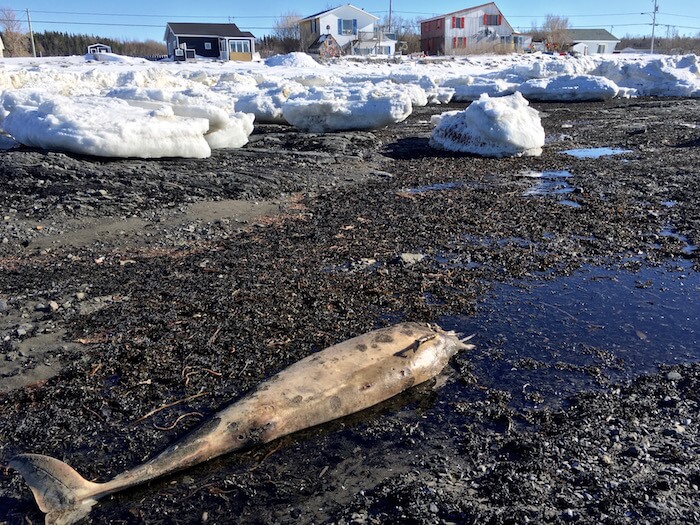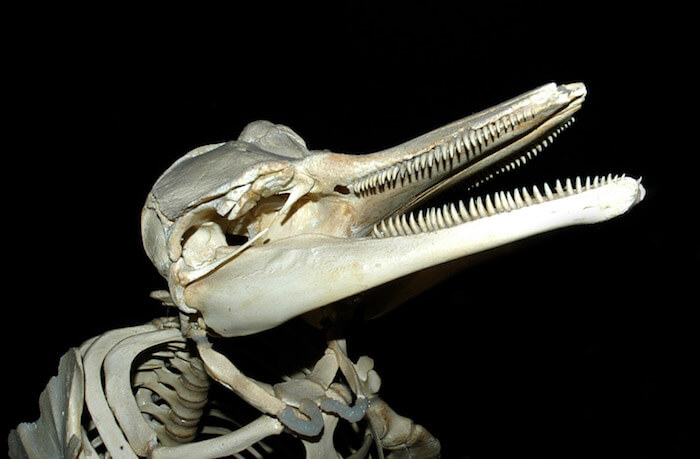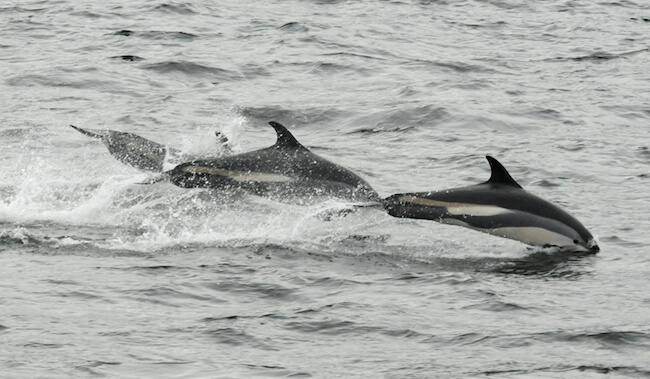Two white-sided dolphin carcasses were discovered in Sainte-Flavie on March 21. A resident of this Lower St. Lawrence town and volunteer for Marine Mammal Emergencies discovered it during his daily stroll. The first carcass was buried under the ice and snow, but its exposed skull caught the walker’s attention. The second one was discovered about 500 m away and in a state of advanced decomposition.
Dolphin or porpoise?
According to the observer, everything indicated that the first carcass was that of a white-sided dolphin, and the other, a harbour porpoise. However, the individual who handles in-coming reports at 1-877-7baleine carried out a detailed analysis of the photos of the two skulls and, most importantly, a comparison of the length measurements taken on the carcasses with those indicated in literature.
First, the teeth and the shape of the rostrums (or beak) both agree with white-sided dolphin. According to data transmitted by Anik Boileau, biologist at the Sept-Îles Research and Education Centre, harbour porpoises generally have 22 to 28 pairs of teeth and white-sided dolphins, 29 to 40 pairs.
In terms of length, the measurements taken by the volunteer were 2.90 m for the first carcass and 2.35 m for the second carcass. However, according to experts, the largest size ever recorded for a harbour porpoise in the St. Lawrence is 1.83 m. No doubt: both carcasses are those of white-sided dolphins.
An occasional visitor
The white-sided dolphin is a regular visitor to the Gulf of St. Lawrence, but is more rare in the Estuary. Particularly abundant, it is frequently observed in the Gaspé and approaches the coasts in summer and fall. Though it can never be known for sure, it is likely that these two dolphins, in addition to the one reported dead on February 1 in the same area, are from the group of a few hundred who visited the Tadoussac regionon November 5, 2016.
The carcasses were left on the shore since no recovery and detailed analysis program exists for dolphin carcasses. It is therefore not possible to pinpoint the cause of death. The strong spring tides to come will likely wash the carcasses out to the open sea.







